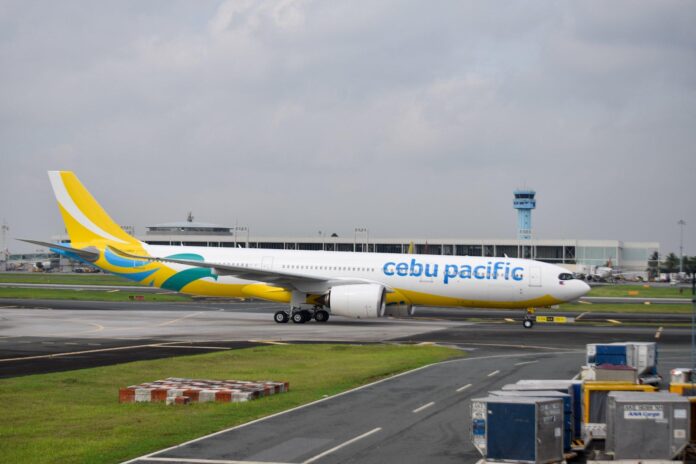
-
Cebu Pacific’s newest jet uses sustainable aviation fuel (SAF)
-
On its delivery flight from Airbus’ facility in Toulouse to NAIA on May 20, the Airbus A33neojet was powered by a blend of SAF and conventional fuel
-
Cebu Pacific is the first Asian low-cost carrier to use SAF in its operation
-
The carrier will use SAF for the delivery of two more A33neo aircraft later this year
-
Cebu Pacific’s sustainability goal tracks global aviation’s net zero carbon emission target by 2050
Cebu Pacific’s newest jet used sustainable aviation fuel (SAF) on its delivery flight from Toulouse, France to Ninoy Aquino International Airport in Manila on May 20.
The brand-new Airbus A33neo used a blend of sustainable aviation fuel and conventional fuel on that flight, making Cebu Pacific Asia’s first low-cost carrier to include SAF in its operations, the carrier said in a statement.
The plane is Cebu Pacific’s third A330neo and is the greenest aircraft in the industry given its fuel efficiency and carrying capacity, according to the airline.
READ: Cebu Pacific receives first A330neo
The A330neo is configured with 459 seats in a single-class layout and is fuel-efficient, achieving 25% less fuel burn than previous-generation aircraft.
Cebu Pacific said it intends to use SAF for the delivery of two more A33neo aircraft later this year.
“This move to use SAF is a pillar of Cebu Pacific’s sustainable journey. SAF will be used for aircraft delivery and is a major component of our fleet modernization. This strengthens our drive to achieve our green goal of being carbon neutral by 2050,” Cebu Pacific chief strategy officer Alex Reyes said.
SAF is a “drop-in” replacement for fossil fuels as it is produced from renewable resources. Use of SAF reduces carbon emissions by up to 85% across the SAF lifecycle. The chemical and physical attributes of SAF are almost identical to those of conventional jet fuel, so it can be mixed safely with regular jet fuel to varying degrees.
SAF does not require any adaptations to the aircraft or engines and does not have any negative impact on performance or maintenance.
The airline’s sustainability goal is aligned with global aviation’s commitment to achieve net zero carbon emissions by 2050.
To respond to this challenge, Cebu Pacific said it invested in technology and is practicing fuel-saving and emission reduction strategies.
The airline said its three major pillars on its sustainable journey are fleet modernization, which aims at having an all-Neo fleet by 2027; resource optimization, which includes pushing for fuel efficiency best practices; and using SAF by launching green routes by 2025, and fuelling its entire network with SAF by 2030.
For this year, Cebu Pacific has allotted capital expenditure of P32.8 billion mainly for fleet replacement.




